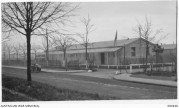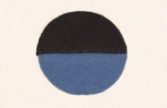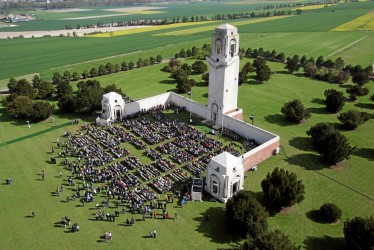ARMFIELD William Henry
-
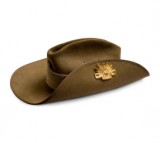
- 2382
- Private
- 49 Battalion
- Eumundi
- Yes
- 9 December 1895
- Mittagong, New South Wales
- 26 March 1916
- A49 Seang-Choon
- 19 September, 1916
- Brisbane
-
William Henry Armfield was a son of Edward John Armfield (1862-1948) and Eliza Wright (1869-1921), one of ten children born to the couple. He was born in Mittagong, a town located in the Southern Highlands of New South Wales, 113 kilometers south west of Sydney. Later his parents moved to Bangalow on the Richmond River, Northern New South Wales and lived there until their deaths.
In Brisbane on 26 March, 1916 William enlisted in the 5th Reinforcements of the 49th Battalion. He was 21 years of age, stood 5 ft 7 inches (170 cms) tall and weighed 150 pounds (68 kilograms), had brown eyes and hair. At the time of his enlistment he was working for Patrick Donnelly, a well-respected builder in the hinterland town of Eumundi and he was also engaged to one of Patrick’s daughters, Cecily.
In 1916, enlistments in the AIF were trained for six months before embarking for overseas. On 19 September, 1916 he embarked on the troopship,“Seang-Choon”, in Brisbane for service overseas. He arrived in Plymouth, England on 9 December, 1916 and in all likelihood would have been sent to Codford for further training in trench warfare. Men at Codford were given leave and many travelled to London to see and enjoy the sights of a large city. This would have been an eye opening experience for a young man from a bush town in Queensland. William saw in the New Year in London and very much enjoyed himself as it was recorded that he had to report to the 1st Australian Dermatological Hospital at Park House on 15 January with VD (Venereal Disease). Whilst at Park House he also contracted mumps. On his admission form to hospital he stated that this was his first attack of VD and he contracted it from a prostitute in London. Unfortunately William had gonorrhoea which was a difficult and painful disease to cure.
The army regarded VD as a “military crime” and punishment was severe and embarrassing for the man who would not want his family to know. His pay was forfeited for the time in hospital and if a soldier had allocated an allotment of his pay to his family this was also forfeited until he was well. A man would not receive any pay until his family allotments had been made up so this sometimes caused great hardship for the soldier concerned. Gonorrhoea was mainly treated by urethral washouts using medicated fluids, a treatment that was much detested and feared by the men and a treatment that caused William to faint on one occasion. He was to remain in hospital for 87 days and was discharged on 11 April, 1917 to proceed back to Codford for training.
In 1917, soldiers at Codford left an unusual memento that has become a lasting reminder of their presence there. Using the glass bases of beer bottles they sculpted a large (53 x 45 metres) Rising Sun badge on the side of a nearby hill. Polishing the glass, the story goes, became a punishment duty and the slope on which they worked, Lamb Down, became known as 'Misery Hill'. The badge was covered with turf during World War II but its outline has since been restored by scouring it into the chalk of the hillside. Though the military camps have long gone, the villagers of Codford maintain their Australasian connection by holding a memorial service on Anzac Day every year.
On 25 June, 1917 William proceeded from Southampton to Havre by ship where he was in a segregation camp until 20 July. Why he was in a segregation camp is not known but invariably it did mean that the soldier or soldiers concerned had had contact with some contagious disease, eg measles. Large numbers of soldiers cramped into a troop ship for three or four days led to contagious diseases spreading quickly. He joined his unit in the field on 3 August, 1917.
During August, 1917 the 49th Battalion was involved in training, supplying, carrying and working parties. In this time they were being constantly moved on route marches and rebillited. The type of training they experienced was close order drill, musketry, instruction and training of specialists, gas drill, bayonet fighting and rapid loading of rifles.
Training continued into September and the battalion was also resting. A cricket match was played against the 13th Brigade which was easily won and the Brigade Championship was very welcomed by the men. Preparations were being made for an attack with the battalion moving on 25 September. The battalion left Ypres moving to Westhoek Ridge where the men rested in the trenches prior to the attack. The barrage opened up on schedule and was very effective, and precise with the troops moving forward under its protection at safe intervals. The attack was pushed home owing to the effectiveness of the barrage. The enemy did not mount a counter attack. This was William’s first experience of combat. On the night of the 27th the battalion was relieved by the 46th Battalion and they moved to Westhoek Ridge. Total casualties during the battle were 6 officers wounded, 25 other ranks killed and 82 wounded.
The first two weeks of October were spent bathing, resting and cleaning up equipment. Moving to Broodseinde Ridge the 49th took over the front line from the 6th AIF Brigade. On the 17th William reported sick and was admitted to hospital with Trench Feet. He was eventually moved to Birmingham, England for treatment. Trench foot is a medical condition caused by prolonged exposure of the feet to constant damp, unsanitary and cold conditions. Affected feet may become numb, turn red or blue as a result of poor vascular supply and feet may begin to have a decaying odour. As the condition worsens, feet may also begin to swell. Advanced trench foot often involved blisters and open sores which lead to fungal infections. If left untreated, trench foot usually results in gangrene which causes the need for amputation. If trench foot is treated properly, complete recovery is normal though it is marked by severe short term pain when feeling returns.
After his recovery William was granted fourteen days leave and ordered to report to Sutton Veny on 21 January, 1918. He was arrested seven days later in Birmingham for being Absent Without Leave where he was sentenced to twenty days of Field Punishment 2 with a total forfeiture of 31 days pay. There were two categories of field punishment. Field punishment No. 1 consisted of heavy labouring duties, possibly being restrained in handcuffs or fetters, and being tied to a post or wheel. Field punishment No. 2 differed, in that the offender was not liable to be attached to a fixed object.
On the 12 March William rejoined his unit in the field in France. He returned to the routine of training and football matches, both soccer and rugby, and the notification of the Queensland Elections was received. A most unusual event was enjoyed by the Non Commissioned Officers and men on the 23 March. It was their 1917 Christmas Dinner. It had not been possible to have Christmas Dinner at the usual time owing to operations at Cambrai. A dinner menu was printed and the men had soup as a starter, brawn and ham with mashed potatoes as entrée, joints of roast pork and roast beef with apple sauce and stuffing as well as vegetables of roast potatoes or boiled potatoes and mashed swedes. There was Christmas Pudding with custard for sweets, fruit and nuts and coffee.
The majority of men of the 49th battalion were from Queensland and a poem was read to them composed by A H Gallagher.
Queenslanders
Lean brown lords of the Queensland beaches;
Lithe limed kings of the Barcoo bands;
Princes that ride where the Roper reaches,
Captains that camp where the Great Gulf ends;
Never such goodly men together
Marched since the kingdoms first made war;
Nothing so far as Australia’s banner
Waved in an English wind before.Ardour and faith of those keen brown faces;
Challenge and strength of those big brown hands;
Eyes that have flashed upon wide flung spaces;
Chins that have conquered in fierce far lands;
Flood could not daunt them,
Drought could not break them,
Deep in their hearts is their suns own fire,
Sons of thins – England – take them
These are a few of thy souls desire.On 5 April the 49th Battalion assisted in the repulse of a large German attack, launching a critical counter-attack late in the afternoon. ”A” Company was lying on the side of a hill about half a mile on their side of Dernacourt close to Albert waiting for the enemy fire to die down a bit. A trench mortar was firing occasionally about a couple of hundred yards away and one of the shells dropped between William Armfield and Sgt Proctor. The two were only a few feet apart and the shell exploded when it fell and killed both men instantly. They were both buried in a cemetery that had been made on a little hill just back of a line between Dernacourt and Buire. William Armfield was killed in the evening but in broad daylight.
On the front page of the Nambour Chronicle it was inserted that the Eumundi Red Cross Society had sent a letter of sympathy to Miss Cicely Donnelly, fiancée of William Armfield who had been reported killed. His death was also recorded in the Brisbane Courier on 17 May, 1918 and was inserted by his parents. Edward and Eliza Armfield had also lost another son, Theodore Bertram Armfield, on 23 July, 1916. Eliza wrote to the army on 22 February, 1923 enclosing stamps to the value of 1/- requesting that photographs of her son’s graves be sent to her. Tragically both her son’s graves had not been found by the Graves Services. She was advised that failure to recovery and identify the actual remains that “the authorities contemplate the erection of suitable memorials to the missing on which the full regimental description of the soldier and date of death will be inscribed”.
His body was never found and William Henry Armfield’s name is memorialised on the Villiers-Bretonneux Memorial in France and a tree was erected in his honour in Eumundi. His former employer, Patrick Donnelly, built the picket fences around the memorial trees. Cecily Donnelly mourned her fiancée deeply and posted memorial notices in the Nambour Chronicle up to 1920. In 1926 she married Alfred Lovell and moved to New South Wales.
His brother’s name also appears on the Villiers-Bretonneux Memorial.
- Dernancourt
- Western Front
-
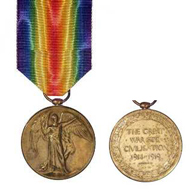
-
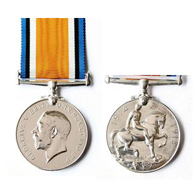
- Killed in action
- Did not return
- 5 April 1918
- Dernancourt, France
- 23
- No known grave. Memorialised as missing at Villiers-Bretonneux Memorial
-
Eumundi & District Roll of Honour Board, Eumundi Memorial School of Arts Hall, Memorial Drive, Eumundi
Nambour (Maroochy Shire) Roll of Honor Scroll, Private Collection, Nambour (this scroll was available for sale to the public after the war)(twice - as WH Armfield and HW Armfield * [died])
Maroochy Shire Honor Roll, Shire Chambers, Bury Street, Nambour
Maroochy Shire War Dead, Quota Park, Matthew Street, Nambour
-
Service Records - http://recordsearch.naa.gov.au/scripts/Imagine.asp?B=3035170
Parents: www.ancestry.com.au
Veneral Disease in WW1 - http://static.awm.gov.au/images/collection/pdf/RCDIG1069707--1-.PDF
Treatment of Gonorrhoea - http://www.gwpda.org/medical/medindex.htm
Segregation Camps – http://archiver.rootsweb.ancestry.com/th/read/GREATWAR
Trench Feet - http://en.wikipedia.org/wiki/Trench_foot
War Diary August 1917 - http://www.awm.gov.au/collection/AWM4/23/66/15/
War Diary September 1917 - http://www.awm.gov.au/collection/AWM4/23/66/16/
War Diary October 1917 - http://www.awm.gov.au/collection/AWM4/23/66/17/
War Diary March 1918 – http://www.awm.gov.au/collection/AWM4/23/66/22/
War Diary April 1918 - http://www.awm.gov.au/collection/AWM4/23/66/23/
Eumundi Red Cross Society - http://www.nambour-chronicle.com/browse2.php?do=view_thumbnail&id=4091
Roll of Honour (Brisbane Courier) 0 http://trove.nla.gov.au/ndp/del/article/20226748?searchTerm=armfield&searchLimits=l- state=Queensland|||dateFrom=1918-05-17|||dateTo=1918-05-17Image Sources:
Christmas Dinner Menu - War Diary March 1918 – http://www.awm.gov.au/collection/AWM4/23/66/22/
1st Australian Dermatological Hospital – www.googleimages.com.au (Fighting the Kaiser Blogspot)
49th Battalion Colour Patch - https://www.awm.gov.au/units/unit_11236.asp
Edward Armfield – www.ancestry.com.au (Carroll Family Tree)
Eliza Armfield – www.ancestry.com.au (Carroll Family Tree)
Mittagong - https://www.google.com/search?site=imghp&tbm=isch&source=hp&biw=1342&bih=515&q=mittagong+from+jellore+outlook
Soldiers with trench feet - http://static.awm.gov.au/collection/images/screen/E00081.jpg
Wet trenches - http://www.aaia.com.au/pedro/ww1/trench1.jpg
HMAT A49 “Seang-Choon” - http://alh-research.tripod.com/ships_lh.htm
Villers-Bretonneux Memorial - http://www.cwgc.org/find-a-cemetery/cemetery/93000/VILLERS-BRETONNEUX%20MEMORIAL
Photo courtesy of Grant and Kerrie Thorne - Yvonne Atkinson


